
Divided We Stand
Nearly 20 years after gray wolves were reintroduced to Yellowstone National Park and central Idaho, deep fault lines remain in public opinion over wolves’ presence and the appropriate limits of their range.
Section:Picture story

Braxton Wheeler, 4, of Island Park, Idaho, presses his hands to the glass and locks eyes with a wolf at the West Yellowstone Grizzly & Wolf Discovery Center near Yellowstone National Park on Saturday, May 18, 2013. For those who make the pilgrimage to Yellowstone to see wildlife, the Discovery Center offers a chance to see some of the West’s most controversial predators.
TYLER TJOMSLAND The Spokesman-Review Buy this photo
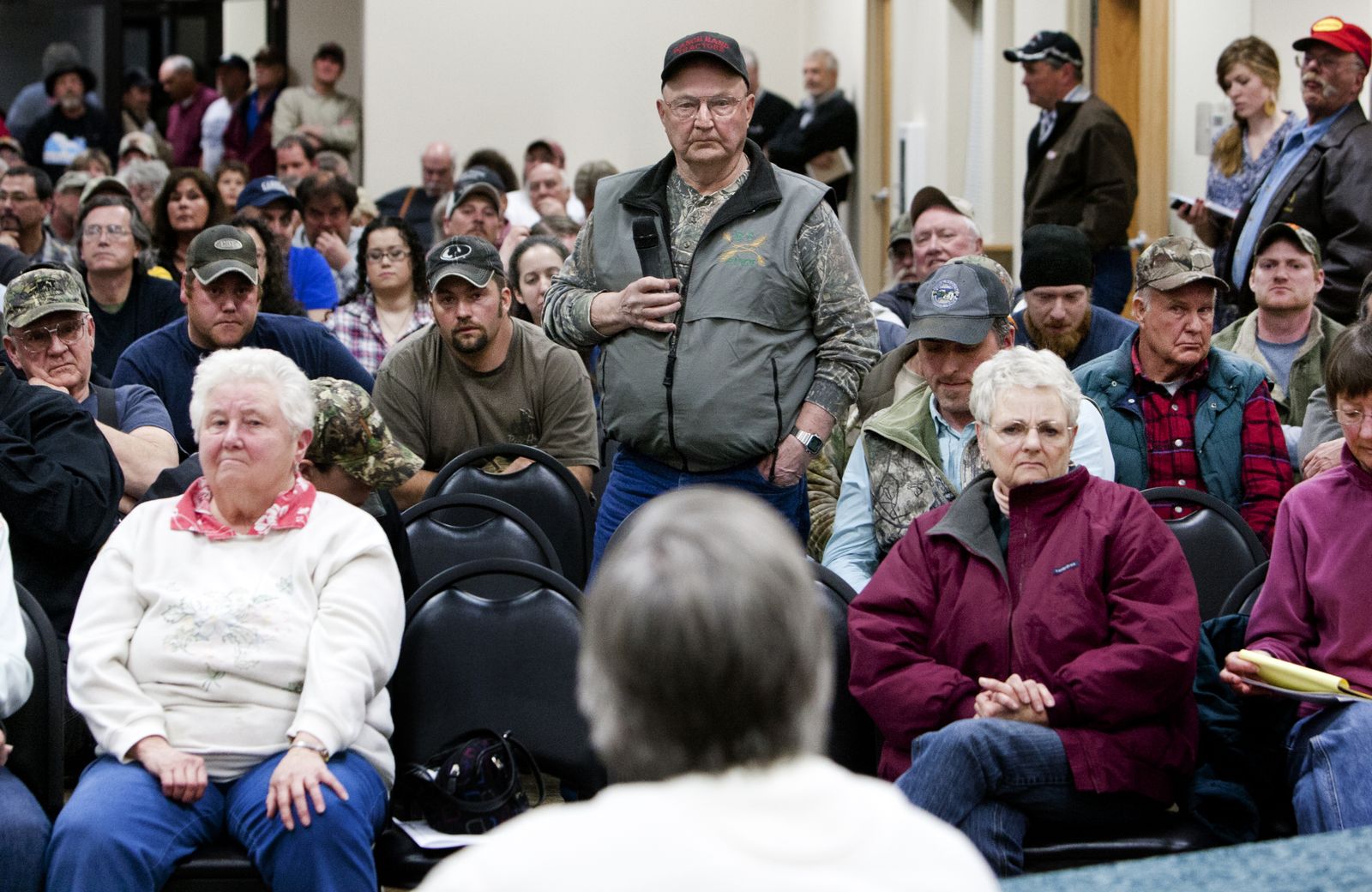
Bud Sampson, a hunter and farmer concerned with wolves reappearing in the forests near his home in Colville, Wash., listens with other concerned citizens as WDFW game manager Dave Ware, foreground, fields his questions during a packed town hall meeting to discuss wolf impacts on game species such as deer and elk on Wednesday, March 28, 2013, at the Colville Ag Trade Center.
TYLER TJOMSLAND The Spokesman-Review Buy this photo

On land near his Riverton, Wyo., ranch, Gene Jordan fords an icy river to mend a barbwire fence demolished by snow-melt as his wife, Debbie, watches from the opposite bank on Wednesday, May 15, 2013. Since the earliest settlers arrived on the range, fences have set boundaries and protected assets. But predators like wolves can easily slip through conventional fencing and swim across rivers. Before wolf reintroduction, Jordan said he typically lost a handful of calves every year to pneumonia or black bears. Now, he usually loses about 25 calves. He doesn’t find all the carcasses in the sagebrush and timbered draws. And when he does find them, they’re sometimes too badly decayed to determine the cause of death. Each calf is worth about $800. If wolves take 20, “that’s $16,000,” he said.
TYLER TJOMSLAND The Spokesman-Review Buy this photo
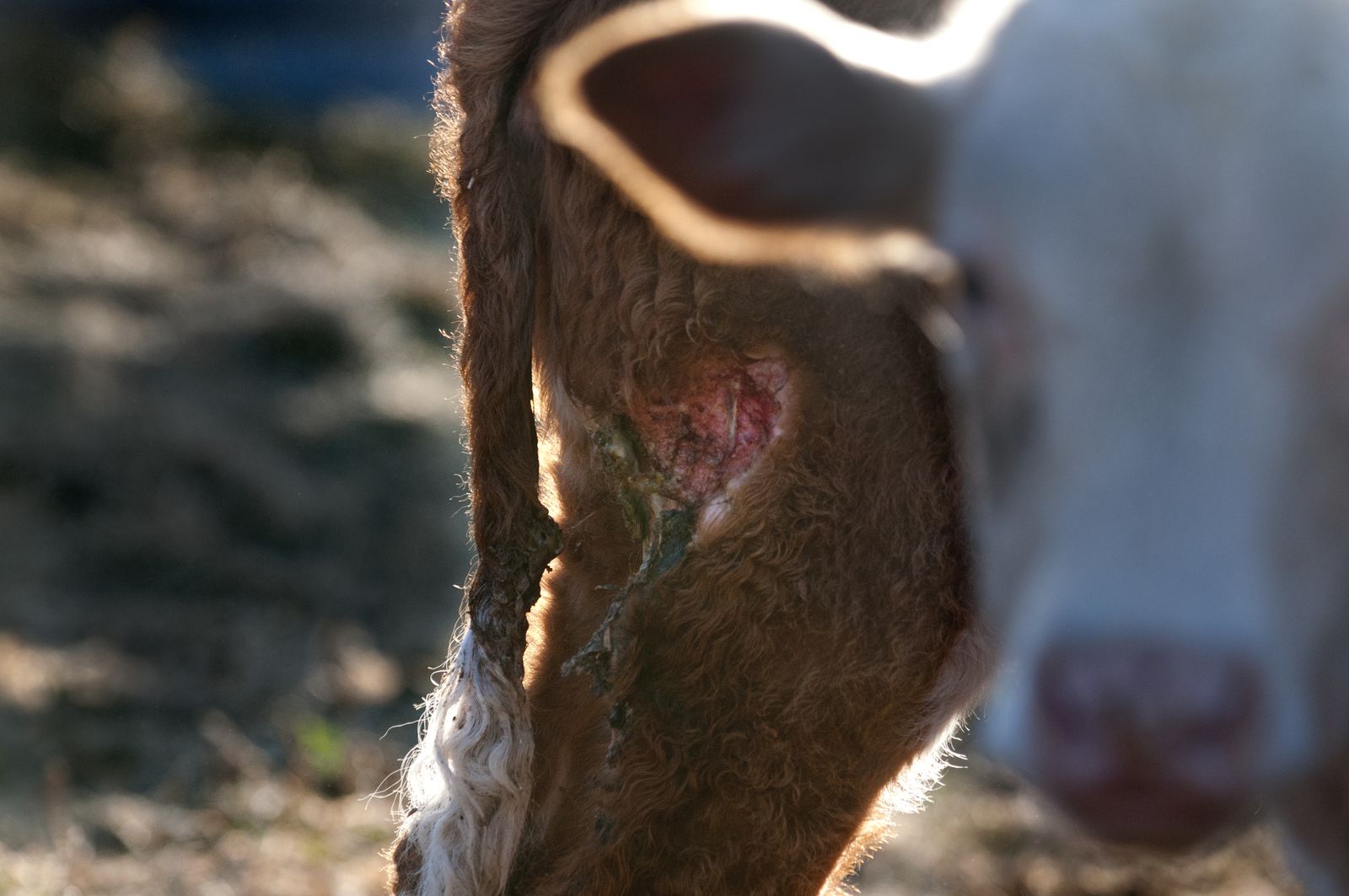
Rancher Len McIrvin said this calf, pictured on Sept. 12 2012, was attacked by a wolf, likely a member of the Wedge pack, on his property in the fall of 2012 at the Diamond M Ranch in Laurier, Wash. Many ranchers in the Colville area have struggled with wolves returning to the ecosystem. At the time of the photo McIrvin estimated he had lost 40-50 head of cattle to wolves. That fall the state Department of Wildlife issued a kill order for the Wedge pack. Using a helicopter, the Department of Wildlife eliminated the pack in a few days.
TYLER TJOMSLAND The Spokesman-Review Buy this photo
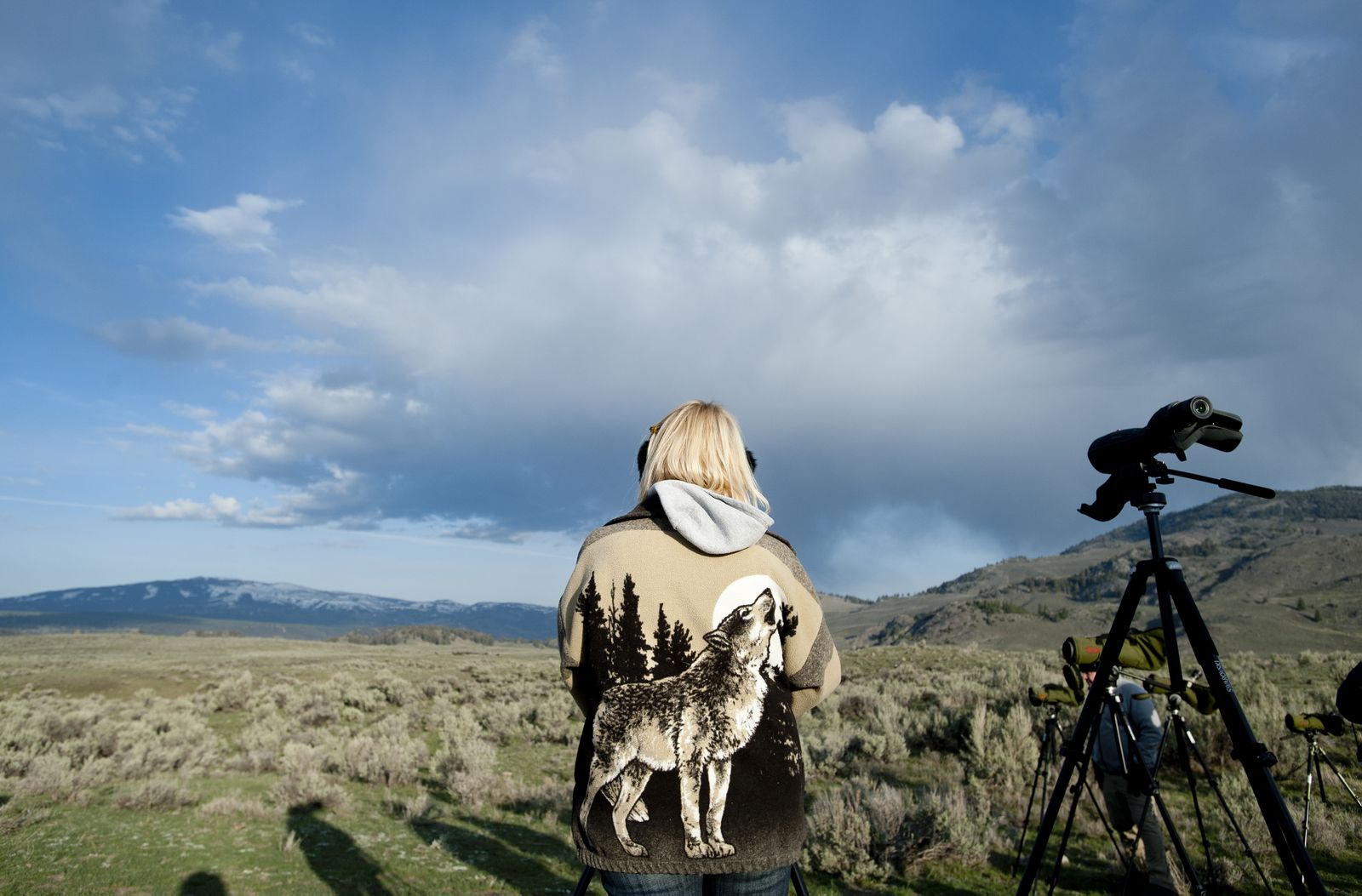
Wolf watcher Linda Hamilton, of Green River, Wyo., uses a spotting scope to scan the flat plains near the Lamar Valley in Yellowstone, Mont., on May 11, 2013. Hamilton and her husband, Larry, said they have come to Yellowstone many times since wolves were reintroduced to the park in 1995. More than 300,000 people see wolves in the park each year, according to a 2006 University of Montana study, which estimated the impact of Yellowstone wolf tourism at $35 million annually.
TYLER TJOMSLAND The Spokesman-Review Buy this photo

Wolf toys await young tourists in the Yellowstone Association gift shop on Thursday, May 9, 2013, near the Gardiner, Mont., entrance to Yellowstone. Most gift shops around Yellowstone entrances sell wolf-related trinkets among those for other notable animals found in Yellowstone.
TYLER TJOMSLAND The Spokesman-Review Buy this photo
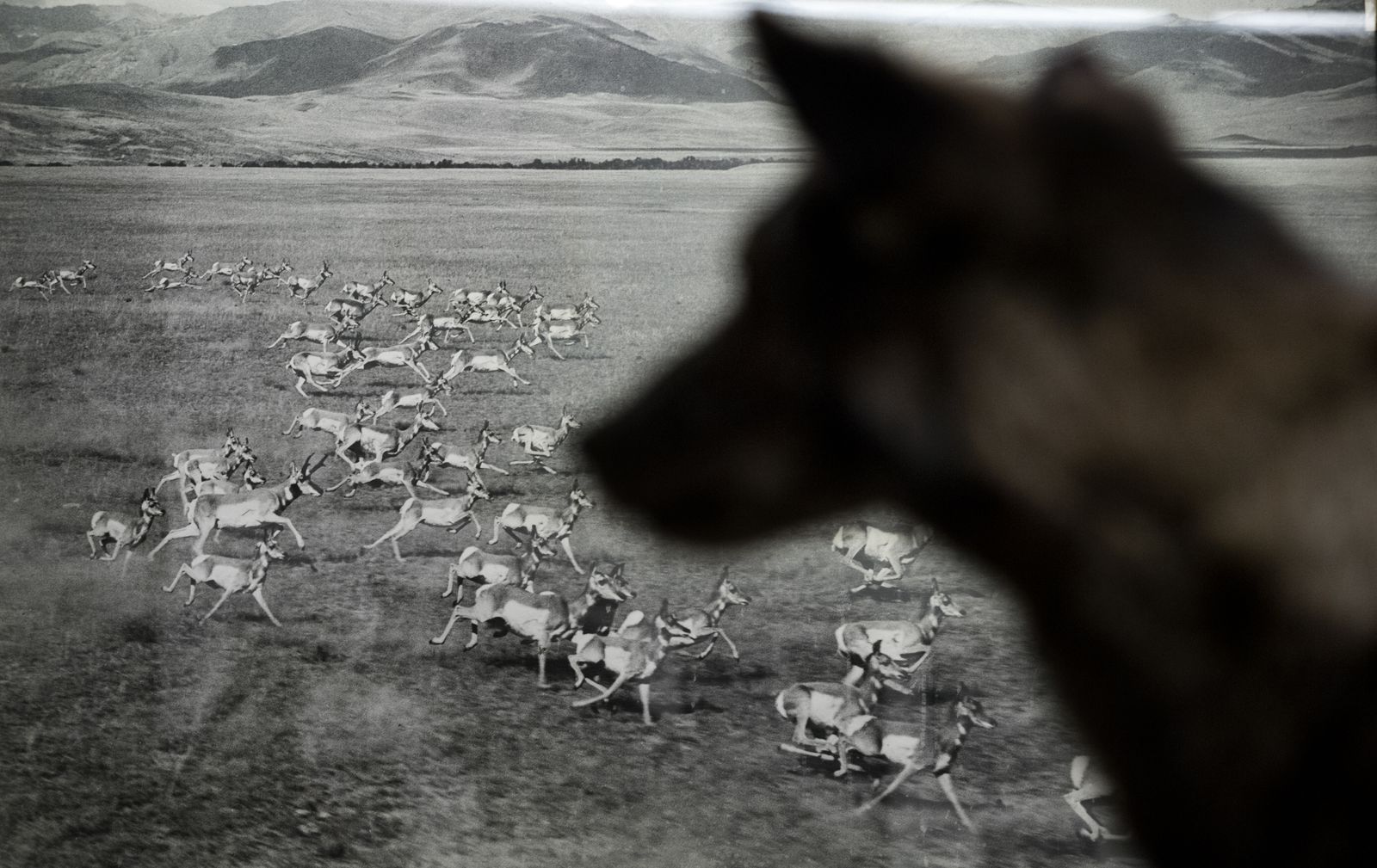
A taxidermied black wolf is silhouetted against a 1930’s Charles Belden photograph of antelope running across the plains near Meeteetse, Wyo., on Tuesday, May 14, 2013, at the Charles Belden Photography Museum in Meeteetse. Many hunters worry about the effect of wolves on game populations, while many conservationists argue that wolves are necessary to thin herds and keep game populations at healthy levels.
TYLER TJOMSLAND The Spokesman-Review Buy this photo
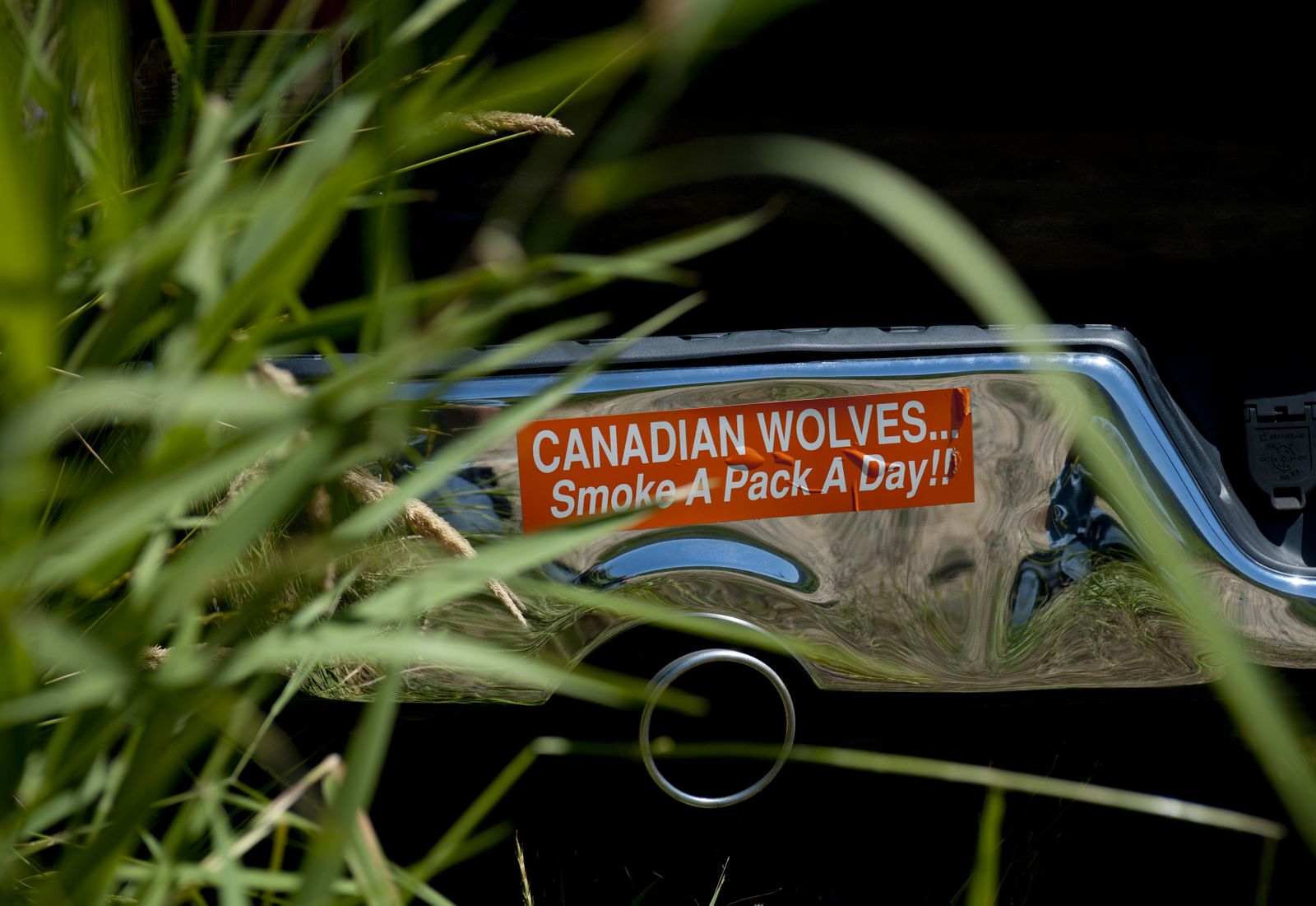
A popular anti-wolf slogan adorns the bumper of a pickup on Sunday, July 22, 2012, at the at the third annual “Summer Sucks” Grass Drags, a snowmobile race in which competitors run their sleds on an open grass field in summer heat in St. Maries, Idaho. Many rural areas have been concerned with the possible influx of wolves from Canada in recent years.
TYLER TJOMSLAND The Spokesman-Review Buy this photo
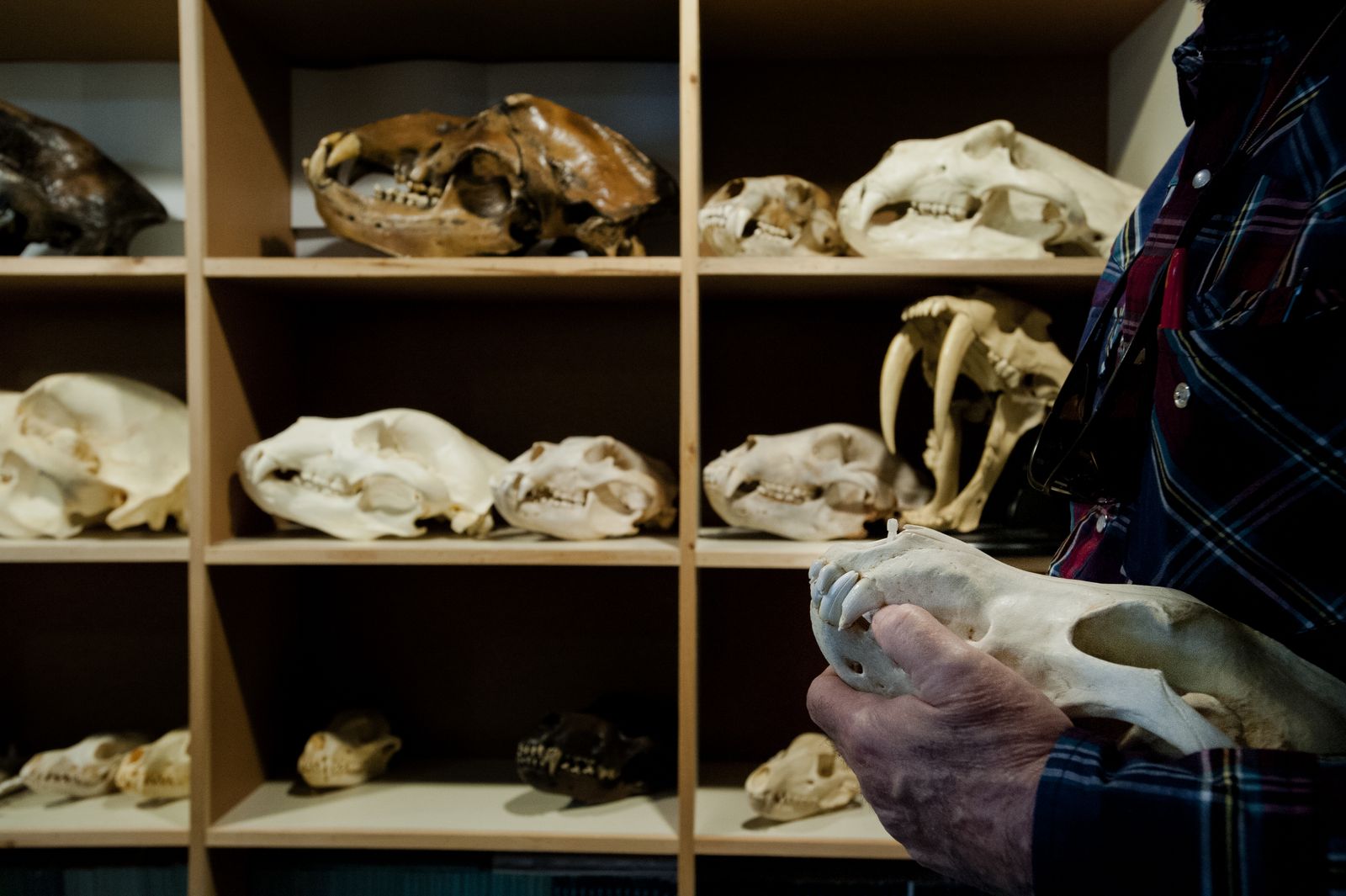
Dr. Jim Halfpenny holds a wolf skull at his Track Education Center and Museum on Saturday, May 11, 2013, in Gardiner, Mont. Halfpenny is a professional tracker who has done much work with wolves in Yellowstone, including making a chart for visitors to identify Yellowstone Wolves and match them with their respective packs. Halfpenny has often been called to provide forensic analysis of tracks in cases where human and animal habitats overlap, such as predator attacks on livestock.
TYLER TJOMSLAND The Spokesman-Review Buy this photo
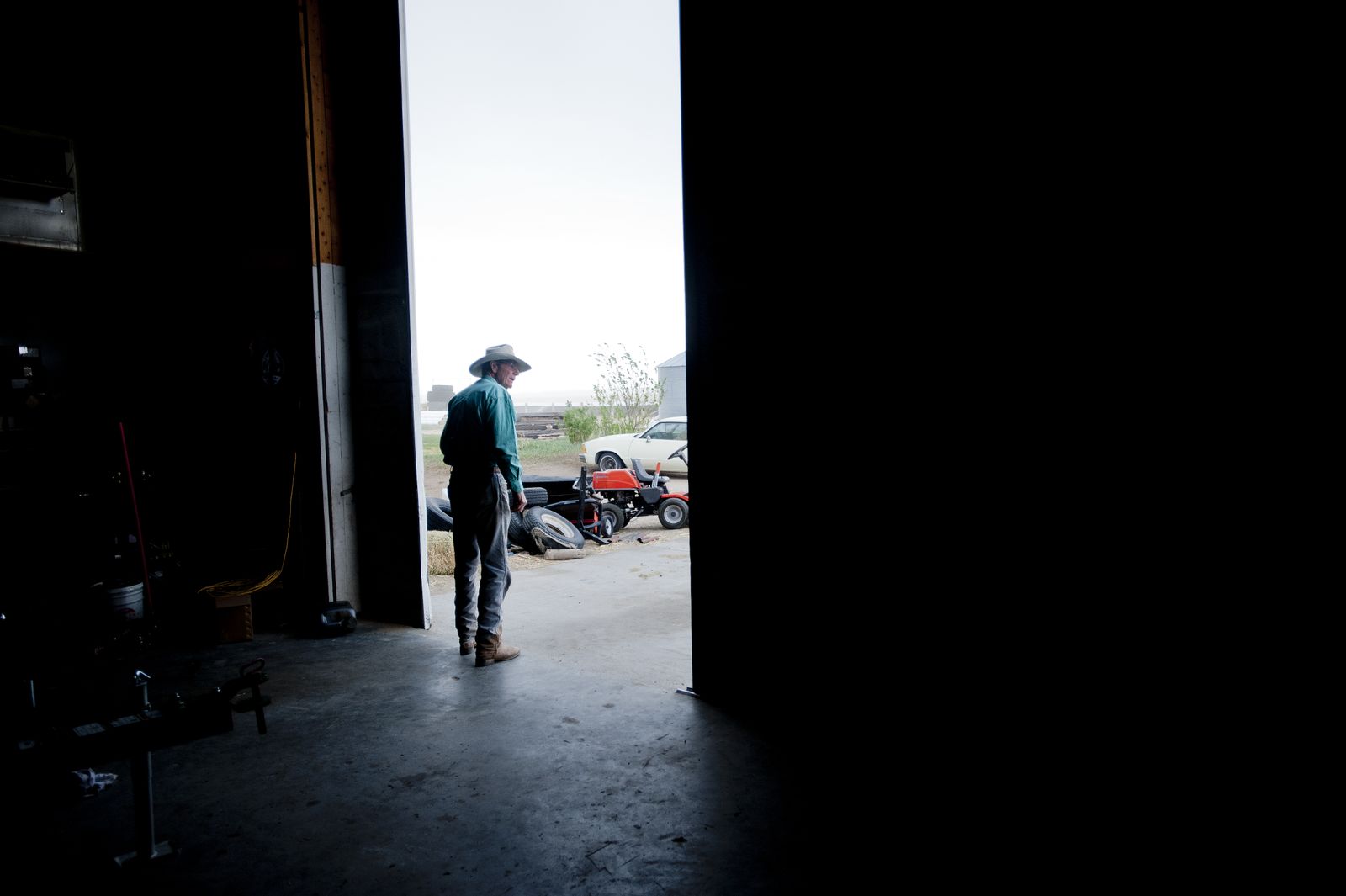
Gene Jordan watches from his equipment barn as a Wyoming storm blows by his ranch home on Wednesday, May 15, 2013, near Riverton, Wyo. Wolves symbolize “this greater, ongoing struggle in the American West over how resources will be used, how lives will be lived and who gets to decide,” said Susan G. Clark, a Yale University professor of Wildlife Ecology and Policy, in her 2005 book, “Co-existing with Large Carnivores.” “Wolves are going to live in the same landscape as local people,” she said.
TYLER TJOMSLAND The Spokesman-Review Buy this photo